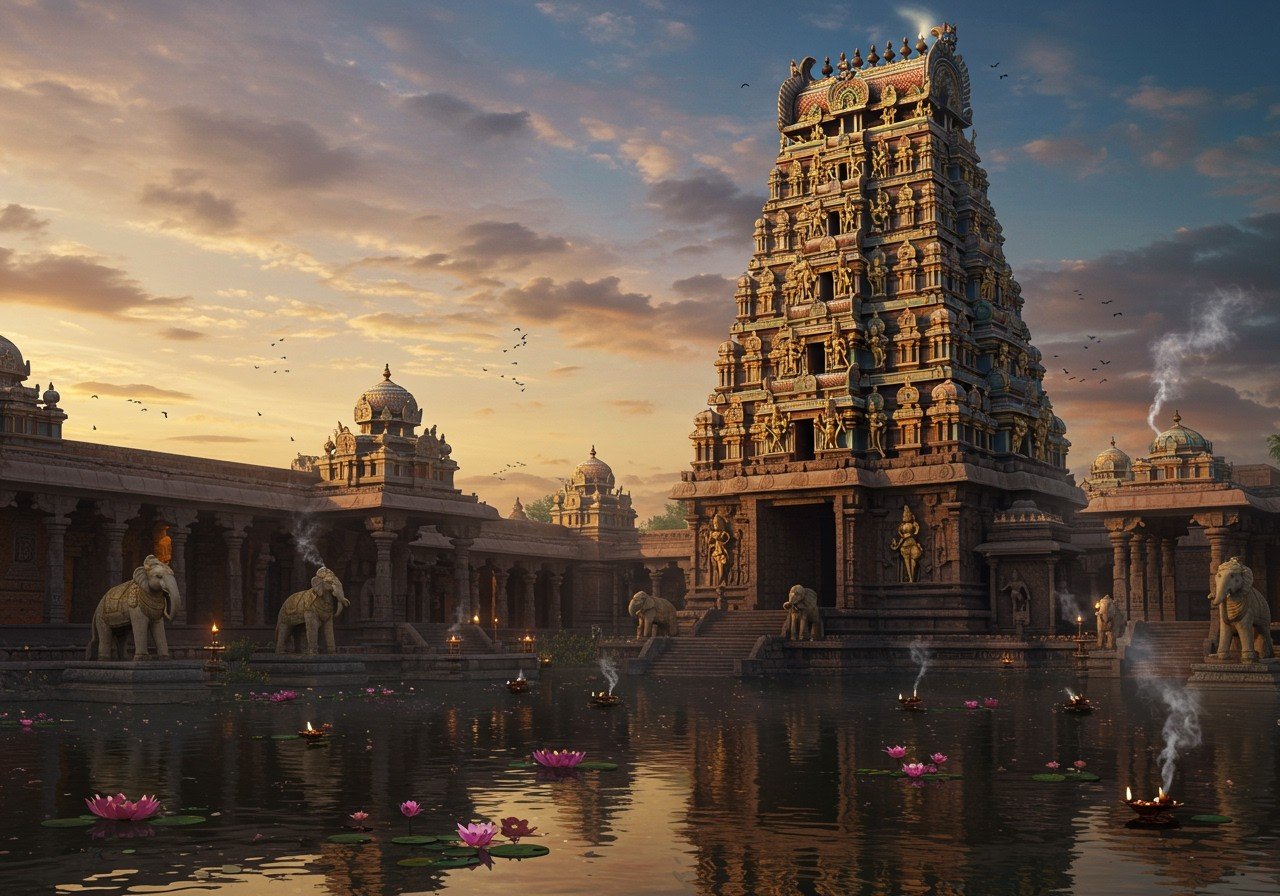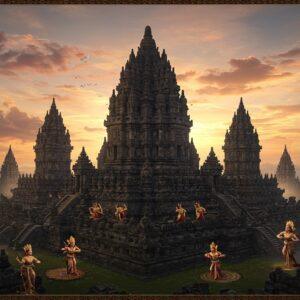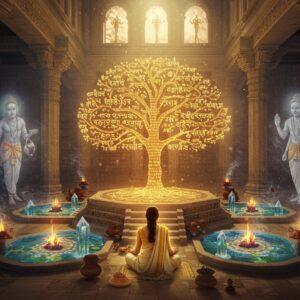
Step into a world of architectural marvels and spiritual significance with our exploration of South Indian temples. These magnificent structures, primarily built in the Dravidian style between the 7th and 18th centuries, stand as testaments to India’s rich cultural heritage and artistic brilliance. Let’s embark on a journey to uncover the intricate details, historical influences, and profound symbolism that make these temples so captivating.
Understanding the Dravidian Architectural Style
The Dravidian style, the hallmark of South Indian temple architecture, is characterized by its towering gopurams (gateways), intricately carved pillars, and expansive courtyards. Unlike the curving shikharas of North Indian temples, South Indian temples feature vimanas, shorter, pyramidal towers that rise above the sanctum sanctorum. This distinct architectural style is a celebration of grandeur and devotion, inviting devotees into a sacred space.
To delve deeper into the wonders of Dravidian architecture, explore our insightful blog post: Dravidian Temples: A Guide to Their Key Architectural Features. This resource offers a comprehensive understanding of the key elements that define this architectural style.
Key Elements of South Indian Temples
- Gopuram: The towering gopuram, often adorned with vibrant sculptures and intricate carvings, serves as the grand entrance to the temple complex. These majestic gateways, sometimes even dwarfing the vimana, create a sense of awe and reverence as one enters the sacred space. Larger temples may have multiple gopurams, each narrating mythological stories and adding to the temple’s artistic richness. As you step through the gopuram, you transition into a world of spiritual significance.
- Garbhagriha: The innermost sanctum, known as the garbhagriha, houses the deity. This sacred chamber is the heart of the temple, a place of profound spiritual energy. The garbhagriha is typically a square chamber, symbolizing stability and the earth element. It’s a place where devotees seek blessings and connect with the divine.
- Mandapa: The mandapa, a pillared hall or porch, provides a space for devotees to gather and offer prayers. Often adorned with intricate carvings and sculptures, the mandapa serves as a transition between the outer world and the inner sanctum. It’s a place for contemplation and preparation before entering the presence of the deity.
- Temple Tank: Many South Indian temples feature a temple tank, a water body used for ritual purification. These tanks, often filled with fresh water, symbolize purity and life. They also play a vital role in maintaining the ecological balance of the temple surroundings. Devotees often cleanse themselves in the temple tank before entering the main shrine.
A Journey Through Time: Dynastic Influences
The evolution of South Indian temple architecture is a captivating narrative shaped by various dynasties. The Pallavas, known for their rock-cut temples like the Shore Temple at Mahabalipuram, laid the foundation for this architectural style. The Cholas, with their magnificent structures like the Brihadeeswara Temple, elevated the Dravidian style to new heights. Later, the Vijayanagara Empire blended various influences, creating opulent complexes like the Virupaksha Temple. Explore the architectural wonders of the Cholas in our detailed blog post: Exploring Dravidian Architecture: South India’s Ancient Temples
Distinctive Features: Setting South Apart
Several key features differentiate South Indian temples from their North Indian counterparts. The prominent gopuram contrasts with the North Indian shikhara (spire). The rectangular layout and single sanctum of South Indian temples differ from the often square layout and multiple sanctums found in the north. The vimana, with its pyramidal form, distinguishes itself from the curving shikhara. To learn more about South Indian temple festivals, check out our guide: Kurmanathaswamy Temple Festivals: A Complete Guide.
Materials and Symbolism
Granite, renowned for its durability, forms the core structural material of these temples. Dark granite is often used for murtis (idols), adding to their mystique. The intricate carvings and sculptures that adorn the temple walls depict deities, mythological narratives, and scenes from daily life. These carvings serve as visual storytelling, imparting cultural and religious knowledge to devotees. Explore authentic granite murtis on poojn.in: Lord Shiva Marble Dust Murti and Standing Shiva Pure Marble Dust Murti.
Bringing the Sacred Home with Poojn.in
Poojn.in offers a curated collection of items to enhance your home temple and spiritual practices. Find traditional brass bells, decorative thoranams, copper kalashas, and temple-style oil lamps to create a sacred atmosphere in your home. We also offer ritual items like copper and brass vessels, puja thalis, wicks, lamp oils, camphor, and dhoop stands. To complete your spiritual journey, explore our educational resources, including books on temple architecture, ritual guides, and information on temple symbolism. Visit www.poojn.in or contact us at 03369029784 (Phone) or 9476142738 (WhatsApp). We offer pan-India shipping with secure packaging to protect your sacred items. Looking for a beautiful bamboo kulo for your puja? Check out our South Dinajpur Special Maa Kali Mukho Printed Bamboo Kulo.
Preserving Our Heritage
South Indian temple architecture stands as a symbol of India’s enduring cultural heritage. These temples are not merely structures of stone; they are living embodiments of devotion, artistry, and spiritual significance. They invite us to connect with our past, appreciate the beauty of our traditions, and find solace in the sacred spaces they offer. As we admire the majesty of these temples, let us also embrace the responsibility of preserving them for generations to come. Discover the intricate artistry of South Indian temple architecture in our blog post: South Indian Temple Architecture: A Sacred Journey.


